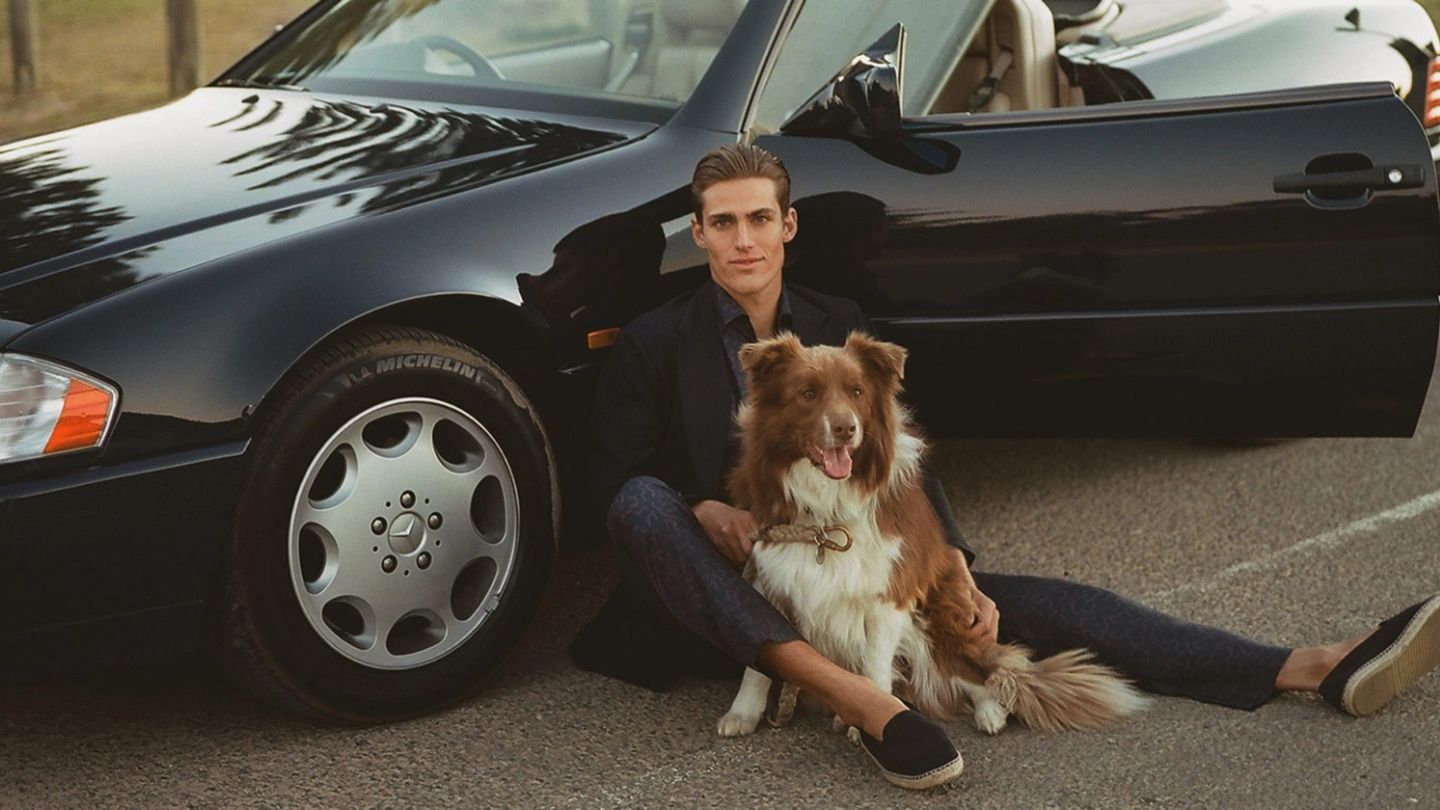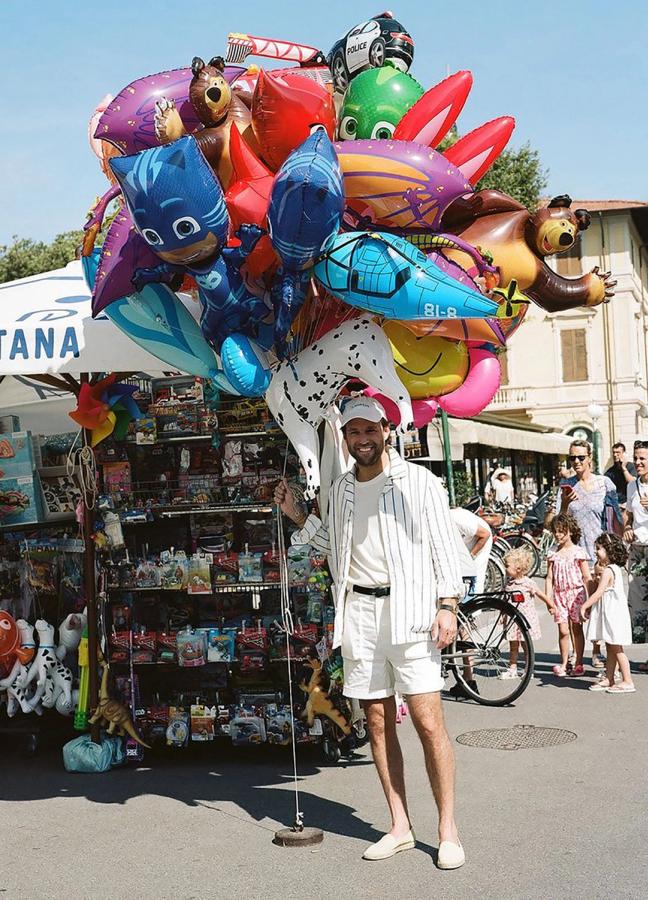

Words: Benedict Browne
When I spoke with Patrick Johnson over the phone, he was in the departure lounge at JFK in New York waiting to board a not-so-brisk 22-hour flight back to Sydney. What’s the globe-trotting entrepreneur’s secret to long-haul travel? “Lots of water, no food on the plane and a good book.”
As the founder of P. Johnson, the laid-back Australian tailoring house which specialises in made-to-measure clothing, Patrick’s work takes him far and wide and his company’s stratospheric rise is a blueprint to follow. This year marks its 10th anniversary and so congratulations were in order – hitting that milestone is quite an accomplishment given the saturation of the market. However, with a competitive spirit deeply instilled in him, Patrick disagrees: “10 years is nothing, we’re just getting our training wheels off!”

Patrick is of that rare breed of entrepreneur who is neither all about creativity or all about numbers, but a winning mix of the two. He gained a bachelors in oenology in his native country, travelled for a bit and then moved to London where he studied pattern cutting at Central St Martins. He then went on to work for shirtmaker Emmett London, where he harnessed his business acumen.
Then it was back to Sydney to set up his own company; impressively doing so without any investment. That drive, ambition and straightforward approach has always been there, he tells me, “I always knew I would [set up my own business] because I wanted to. I wanted to work it out for myself.” Hailing from an intellectual family and feeling like he had something to prove, he set about serving the male population of Australia, helping them dress better and, in turn, feel better about themselves.
Ten years on, there are now eight P. Johnson showrooms around the world – six in Australia and one each in London and New York. There are more in the pipeline but he’s not in a rush. The showrooms are inviting, decidedly modern spaces that respectfully shun the traditional aesthetics and processes of Savile Row, albeit with some reverence to that suiting tradition. “You know when it’s one of those rare sunny days in London, you’re walking down the street, feeling really good about yourself and there’s this movie playing in your head?” he explains. “We’re trying to make a wardrobe for that film.” What he means is that shopping with P. Johnson is a collaborative effort in which the team listens to your needs, interprets and reacts, creating a wardrobe for the man you want to be.
Patrick has also just opened the doors to a purpose-built, made-to-measure workshop in Tuscany. It has an old-school charm, he tells me, and employs 60 people who produce the top-tier P. Johnson Carrara line. It takes six weeks to make a suit, and all the craftspeople come from the surrounding area, which has a very rich history in tailoring. He explains that “a lot of local workshops for major brands have moved away, so when we go to hire new people we get 20 amazing resumes.”
If you can’t wait that long, there’s a faster service based in Shanghai. In a state-of-the-art workshop, which creates garments for many tailoring houses and luxury brands, P. Johnson has 40 craftspeople dedicated to a speedier line of made-to-measure tailoring named Pronto. “We worked closely with our guys in Italy on this – it’s a little bit faster but we make the suits as close as we possibly can to what we do in Italy,” he explains. It’s refreshing to listen to him talk about the merits, rather than the stereotypical negatives, that come with a Made in China product. “The best of the rest of the world in terms of construction comes from China, and as long as it’s for the right price and made in the right way, I don’t care where it’s made. We do pretty rigorous accreditations to make sure that everything is done correctly and also environmentally ticks the boxes.”
Only around 5% of the business is ready-to-wear meaning P. Johnson is without doubt a made-to-measure specialist. It offers a sportier Italian cut that many traditional houses – a relaxed and comfortable product with hues that reflect Australia’s rich tapestry of natural colours. It’s a winning formula that’s partly due to the influences of Patrick’s best friend, photographer James Harvey Kelly, who Patrick believes is “going to be one of the great photographers of our time.”
The environment is a hot topic in fashion right now – especially for an Australian brand – but Patrick is honest about his approach. He doesn’t claim to own a sustainable fashion business as he doesn’t have a positive environmental impact but, quite frankly, who does? “Until we do I’m a bloody hypocrite if I shout about us being a sustainable brand,” he explains. Equally he’s not going to shout about multi-digit growth or looking for investment to install nitrous oxide canisters to his training wheels. After all, it’s growth that can kill a business very, very quickly, “Look at Patagonia, Ralph Lauren and Giorgio Armani – through their growth periods they almost all went bust.”
Patrick is right, and look at those businesses now. Give it another 10 years and P. Johnson might well be dropped into the same conversation, but not so fast. His gate is calling, and he’s going to have to read his good book for 22 hours before he can continue working towards that goal.
Inspired? We unpick the rise of causal tailoring…
Join the Gentleman’s Journal Clubhouse here.


